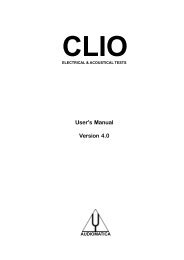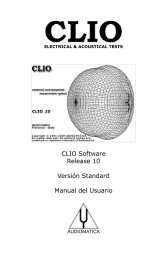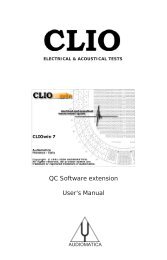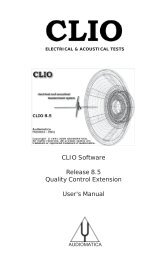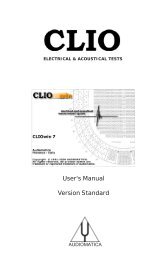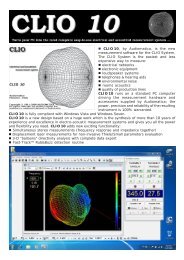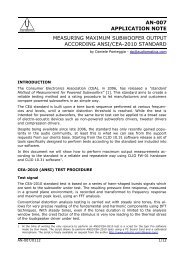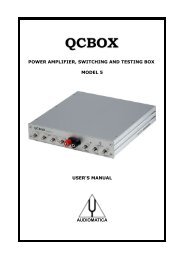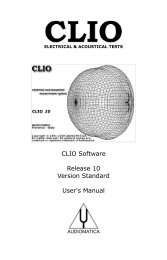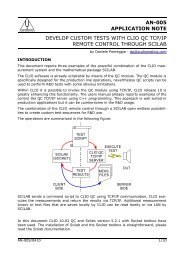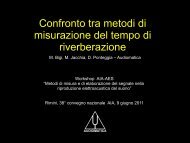CLIOwin 6.5 PCI User's Manual - Audiomatica Srl
CLIOwin 6.5 PCI User's Manual - Audiomatica Srl
CLIOwin 6.5 PCI User's Manual - Audiomatica Srl
Create successful ePaper yourself
Turn your PDF publications into a flip-book with our unique Google optimized e-Paper software.
Now we can save our complete results and proceed with the Delta Compliance. The free<br />
air derived data are already in memory and we can deal with the last part of the<br />
procedure only, which is nearly the same as before. We will be prompted for volume<br />
instead of weight. Obviously the file we have to choose is relative to the driver loaded<br />
with a known volume (15.1 liters in this case). Here we show the results for the delta<br />
compliance method. The two sets of data do agree pretty well.<br />
13.7.4 USING MSE (MINIMUM SQUARE ERROR)<br />
With this option checked, TS parameters are calculated in a more sophisticated way.<br />
Basically the parameters obtained in the standard way are used to derive the starting<br />
values for the equivalent electric circuit model. These values are then changed slightly<br />
around the initial value until the best fit between the calculated and measured<br />
impedance curve is found, in a large frequency range around resonance. This procedure<br />
works fine and gives accuracy advantage if the driver impedance fit the Thiele and Small<br />
model pretty well. Unfortunately this is not always the case. Should the user encounter<br />
such cases (if the parameters obtained with and without MSE differ substantially) he/<br />
she must be warned that the entire concept of TS parameters has loosen its usefulness.<br />
This often happens with tweeters, woofer whose impedance has been measured at high<br />
level, defective devices.<br />
142 Chapter 13 - Measuring impedance and T&S parameters



